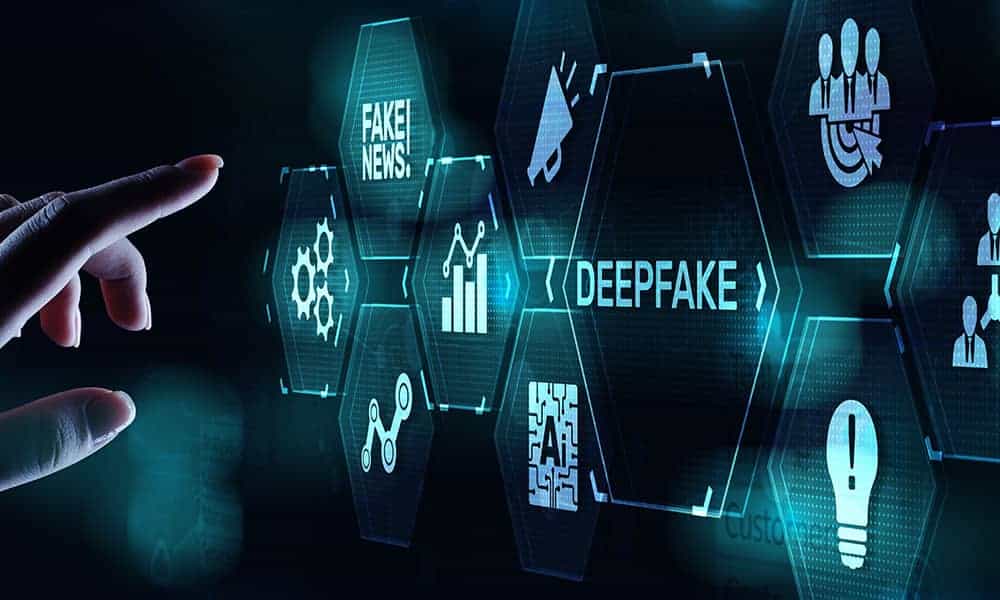
Deepfake is a type of artificial intelligence used to create persuasive counterfeit images, audio and video materials. The term is causing a stir within the digital world because it is concerned about creating and sharing misleading information.
Deepfakes frequently involve altering pre-existing source material by substituting one individual for another. They can also generate content in which an individual appears to be engaging in actions or making statements that they never actually did.
This has been evident in 2 recent cases. In 2022, a fake video of Ukrainian President Zelenskyy telling his troops to surrender appeared, but it was not true.
On October 9th, during Kier Starmer's first day at the labour conference, a fake audio clip was circulated suggesting he mistreated staff members. This was not real and did not happen, but many believed it did with AI technology.
Deepfakes employ a dual-algorithm approach comprising a generator and a discriminator. The generator constructs a training dataset to form the initial fabricated digital content based on the desired output.
Meanwhile, the discriminator assesses the authenticity of the initial content, distinguishing between realism and falseness.
This process enables the generator to enhance its ability to generate lifelike content while refining the discriminator's capability to identify and highlight imperfections for the generator to rectify.
The combination of the generator and the discriminator algorithms creates a generative adversarial network, also known as a GAN. This network uses deep learning to recognise patterns in authentic and real images and use those patterns to create fakes.
When creating a deepfake photograph, a GAN system will view the photograph from many angles to capture all the details and perspectives.
When creating a deepfake video, the GAN will do the same and capture all the angles but will also snapshot behaviours, speech patterns and movement.
This information will then be run through the discriminator multiple times to refine the realism of the final video or photo.

As we have seen already, public people and politicians have been the target of deepfakes in the past, such as Kier Starmer and President Volodymyr Zelenskyy, but why? Below are some reasons:
Politicians and public figures use their influence to shape public sentiment, hence why they are normally the target of a deepfake. Showing a preference for one country is done, and in President Zelenskyy's case, it caused military confusion.
In terms of Kier Starmer, it again was done to influence the public and potentially sway who they vote for. The audio exclaiming how badly he speaks to staff could make people not vote for him in upcoming elections.
This occurs when a subject's image is manipulated to depict them in an illicit, inappropriate, or compromising context, such as deceiving the public, engaging in explicit sexual activities, or using drugs.
These manipulated videos serve various nefarious purposes, including extortion, tarnishing an individual's reputation, seeking revenge, or engaging in cyberbullying.
By fabricating images, video, and audio, one could use them within a court case to offer evidence. This could imply guilt or innocence within a legal case.
Defending against deepfakes can be challenging due to their increasing sophistication, but there are several strategies that you can adopt to reduce their impact:
Educating your employees about deepfakes can be the first line of defence. Teaching them the potential signs of a deepfake, such as unnatural facial expressions and voice inconsistencies, can prevent a breach.
Using digital watermarks or other authentication methods to verify the authenticity of media content. To find reliable sources, it is important to look out for these to understand whether the information you are receiving is legitimate.
Review and adjust your employee's privacy settings on their social media and work accounts to limit access to personal information.
Inforcing employees to use multifactor authentication reduces the risk of a data breach from a deepfake or any other form of malware. This adds another level of security.
At Silver Lining, we know the risks and damage deepfakes or any other cyber security threat can have on your business. Due to this, we offer cyber security management software which can help educate your employees on the risks and be your first line of defence.
Be able to get an in-depth insight into your staff's online security knowledge and be able to send training to them to learn from. We also have a phishing simulation solution to see who your business at risk could out but be able to do so without compromising your security.

